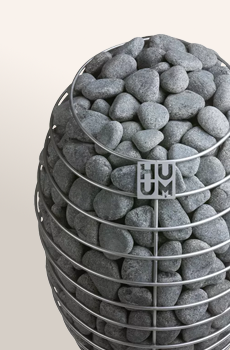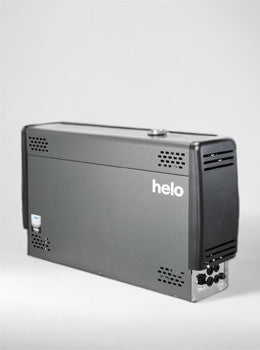
5. Exercise Performance & Muscle Recovery
There are many reasons to exercise: health, fitness, profession, enjoyment…etc. However, it is not uncommon for individuals to find themselves injured and knocked back; whether it’s weeks, months, years, or even permanently. Nor is it uncommon for individuals to find themselves unable to progress as fast or as far as they are trying to, regardless of effort or commitment. Fortunately, sauna bathing has been consistently found to have positive impacts on reducing both the likelihood of injury and the time it takes to recover from injury, as well as improving exercise performance overall. Finnish saunas especially have been found to significantly increase the endurance of the locomotor and cardiorespiratory systems and are frequently practiced for recovery after exercise.

How sauna aids muscle recovery and injury prevention
A 2015 study found that sauna bathing significantly improves exercise-induced muscle damage (EIMD) symptoms concerning both pain intensity and muscle function [1]. It cited several well-evidenced explanations as to why frequent sauna bathing is capable of eliciting these effects, including its ability to promote capillary dilation, relieve muscular spasms, and improve ventricular function – all of which increase oxygen, nutritional, and hormonal flow to the muscles and enable their successful function.
Engaging in ‘cold plunges’ was found to make these aforementioned effects even more successful. Submerging yourself in cold water immediately after and/or between sauna sessions has widely been regarded as an excellent way to improve muscle recovery and reduce pain; hence why athletes have long been using post-exercise ice baths [2]. It works by restricting fluid diffusion into cells and utilising hydrostatic pressure to reduce post-exercise blood lactate levels (a by-product of anaerobic metabolism which contributes to the chemical process that causes sore and stiff muscles) [3].
As for injury prevention, it is worth noting the importance of sauna bathing before engaging in any form of exercise significantly decreases the risk of injury or pain [1]. Evidence has shown that warming muscles prior to any form of exercise causes decreased resistance in muscles and joints, increased blood flow, improved carbon dioxide-oxygen exchange rates, and enhanced nutrition supply to the active structures [4]. It also improves the fatigue characteristics of skeletal muscle during exercise, inhibits pain signals during muscle repair, causes smoother muscle contractions, and protects against strain injuries [1][5].

How sauna improves exercise performance
Sauna bathing provides an excellent source of thermal training for many athletes. This training – most often used by those who compete in endurance-related sports – serves to improve thermoregulation mechanisms within the body and causes a significant increase in prolonged exercise capacity [6]. By using a Finnish sauna to independently increase the temperature and humidity to any required level during repeated bathing sessions, bathers are able to create a vast array of environments to expose themselves to; ultimately performing better for it.
Sauna was also found to have positive respiratory effects; as little as 3 weeks of post-exercise sauna bathing was found to produce a worthwhile enhancement of endurance running performance [7]. This has been attributed to a combination of positive effects on both cardiovascular health and lung function. Regarding this latter issue, it was specifically found that sauna may have direct effects on lung tissue which serve to increase tidal volume, vital capacity, ventilation, and forced expiratory volume [8].
Exercise performance has also been found to be improved through sauna via its effects on blood volume and muscle blood flow – both of which improve exercise performance by increasing the amount of blood and oxygen being received by the muscles [7]. Various mechanisms of action have been put forth for how sauna bathing has this effect; specifically, how it increases blood volume in a way that delivers more oxygen to the muscles. Ultimately it is believed to be caused by harmless and short-term changes to blood composition; plasma volume increases during sauna bathing as a standard reaction to heat stress. This increases the amount of fluid in the blood and reduces its oxygen content – ultimately causing the kidneys to signal for the production of more blood cells to compensate for the decreased oxygen levels they are receiving [7].
As for muscle blood flow, one argument suggests that when the temperature increase raises the oxygen consumption of tissue, vasodilation is initiated [9]. Another proposes that when the body is exposed to high temperatures, nitric oxide will be increasingly synthesised and released within the muscle vasculature – thereby augmenting muscle blood flow [10].
References
[1] Khamwong, P et al (2015) ‘Prophylactic effects of sauna on delayed-onset muscle soreness of the wrist extensors’ Asian Journal of Sports Medicine 6(2). Available at: https://www.ncbi.nlm.nih.gov/pmc/articles/PMC4592767/
[2] Laukkanen, T; Laukkanen, J; Kunutsor, S (2018) ‘Cardiovascular and other health benefits of sauna bathing: a review of the evidence’ Mayo Clinic Proceedings. 93(8) pp. 1111-1121. Available at: https://www.mayoclinicproceedings.org/article/S0025-6196(18)30275-1/fulltext
[3] Lateef, F (2010) ‘Post-exercise ice water immersion: Is it a form of active recovery?’ Journal of Emergencies, Trauma, and Shock (3)3 Available at: https://www.ncbi.nlm.nih.gov/pmc/articles/PMC2938508/
[4] Bishop, D (2003) ‘Warm-up I: potential mechanisms and the effects of passive warm-up on exercise performance’. Sports medicine 33(6) pp. 163-164. Available at: https://www.ncbi.nlm.nih.gov/pubmed/12744717
[5] Mayer, JM et al (2006) ‘Continuous low-level heat wrap therapy for the prevention and early phase treatment of delayed-onset muscle soreness of the lower back: a randomised controlled trial’ Archives of Physical Medicine and Rehabilitation 87(10) pp. 1310-1317. Available at: https://www.ncbi.nlm.nih.gov/pubmed/17023239
[6] Tyka, A et al (2008) ‘Repeated sauna bathing effects on males’ capacity to prolonged exercise-heat performance’ Medicina Sportiva 12(4) pp. 150-154. Available at: https://www.researchgate.net/profile/Tomasz_Patka/publication/244936859_Repeated_Sauna_Bathing_Effects_on_Males'_Capacity_to_Prolonged_Exercise-Heat_Performance/links/545947410cf26d5090ad04d8.pdf
[7] Scoon, G et al (2007) ‘Effect of post-exercise sauna bathing on the endurance performance of competitive male runners’ Journal of Science and Medicine in Sport 10(4) pp. 259-262. Available at: https://www.ncbi.nlm.nih.gov/pubmed/16877041
[8] Laitinen, LA; Lindqvist, A; Heino, M (1988) ‘Lungs and ventilation in sauna’ Annals of Clinical Research 20(4) pp. 244-248. Available at: https://www.ncbi.nlm.nih.gov/pubmed/3218895
[9] Heinonen, I et al (2011) ‘Local heating, but not indirect whole-body heating, increases human skeletal muscle blood flow’ Journal of Applied Physiology 111(3) pp. 818-824. Available at: https://www.physiology.org/doi/full/10.1152/japplphysiol.00269.2011
[10] Harris, MB et al (2003) ‘Heat-induced increases in endothelial NO synthase expression and activity and NO release’ American Journal of Physiology. Heart and Circulatory Physiology 285(1) pp. 333-340. Available at: https://www.ncbi.nlm.nih.gov/pubmed/12663266
---
6. Respiratory Disease, Dementia and Alzheimer’s
Back to Sauna Health Introduction


















